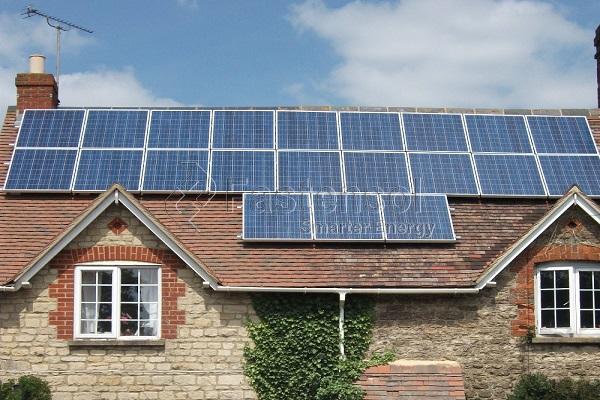What You Need to Know Before Installing Solar Panel on Your Roofs
Putting solar panels on your roof costs as much as a car, but the cohort of experienced buyers is far, far smaller. Besides that, “This is a big one. This is one where you can’t say, ‘well, if I make a mistake, the next time I’ll know better,’” says Jane Weissman, the president and CEO of the nonprofit Interstate Renewable Energy Council, which just released a consumer checklist and other resources for rooftop solar to consider before making the jump to solar energy.
1. Do you have a roof that can support solar panels?
This is pretty key. If your roof is covered in shade most of the day throughout the year, or your roof won’t cut it, or you can’t make the call because you rent your apartment or live in a multi-unit building, looking into shared or community solar would be better choice. This approach lets many different customers buy a stake in a solar installation and receive credits on their electricity bills.
If you do have a suitably sunlit rooftop to work with, Weissman says, make sure it’s in good shape structurally, thus you don’t have to pay extra time and money for renovation mounting system during the 20 or 25 years of solar installation warranties.
Lastly, envision the future of your yard away from obstructions. Be prepared to prune your foliage to keep the panels clear.

2. Have you done everything you can to improve efficiency?
The amount of solar energy you need to produce depends on how much you use, so it makes sense to trim your usage as much as possible before paying for all those panels and Fastensol mounted. Start with an energy audit and look for efficiency upgrades before you draw up blueprints.
3. Which kind of solar makes sense?
If your home uses a lot of energy for heating, or you live somewhere where heating fuel is expensive relative to electricity, a solar thermal investment could break even sooner, says the engineer Timothy Wilhelm. But, he adds, solar thermal is rarer for homes, so it might be harder to find a qualified installer.
4. How do you connect to the grid?
The details vary depending on where you live, but the principle is that any time you’re connecting with a utility, there are a lot of logistics to sort out. Do you have to pay a fee? How long does it take for the utility to get you hooked up? Once you are connected, how and when will you be credited for the electricity you generate? That refers to net-metering, the practice by which utilities reimburse rooftop solar at the same rate as they charge users for electricity.
5. Is your installer trustworthy?
This applies any time you hire someone to come into your home, but solar combines the logistics of a home improvement project with the risks of electrical work. Credentials and references are especially important. “You wouldn’t hire an electrician who had never done electrical work to come into your house and change things around,” says Kelly Larson, an electrical contractor in California with 20 years of experience doing solar installations. And this is a big expense, so don’t be afraid to get a few different quotes before you ink a contract with mounting bracket supplier.
Ideally, you want a company that will stick around for the lifetime of your installation. You don’t want to realize that your installer isn’t around to fix it. So don’t sign that contract unless it address all the details of ownership and financing!
6. Lease or buy?
Every household will need to run its own cost-benefit analysis on this basic trade-off. Buying your own system costs more up front but pays bigger dividends; leasing lets you access cheaper electricity with little or no money down, but the benefits are more limited. If you lease, the company you contract with owns the system, and you pay them a certain rate for the electricity; when the lease is up, they might take the system away. When you own the system, it can keep working for you long after it pays off the cost of the purchase. Make sure you compare the total lifecycle cost of the lease and weigh the savings against the benefits you would get from ownership.
In your financial analysis, keep in mind that the panels can function for decades even more for Fastensol mounting structures, but other electronic equipment in the system, like the power inverter, has a shorter lifespan. Don’t forget to factor in replacements for those other system components when budgeting the cost of the project.
The contract you sign should spell out all the details of financing, ownership, and performance expectations. Also, because these systems can include web-enabled devices, you should check if anyone is collecting data on your home energy production and usage and who has access to it.
That’s a lot of details to keep in mind. When in doubt, don’t go it alone, Weissman says: “If you’re not getting the answers that you need, then it’s probably best to seek some legal advice.” Fastensol await for your inquiry!